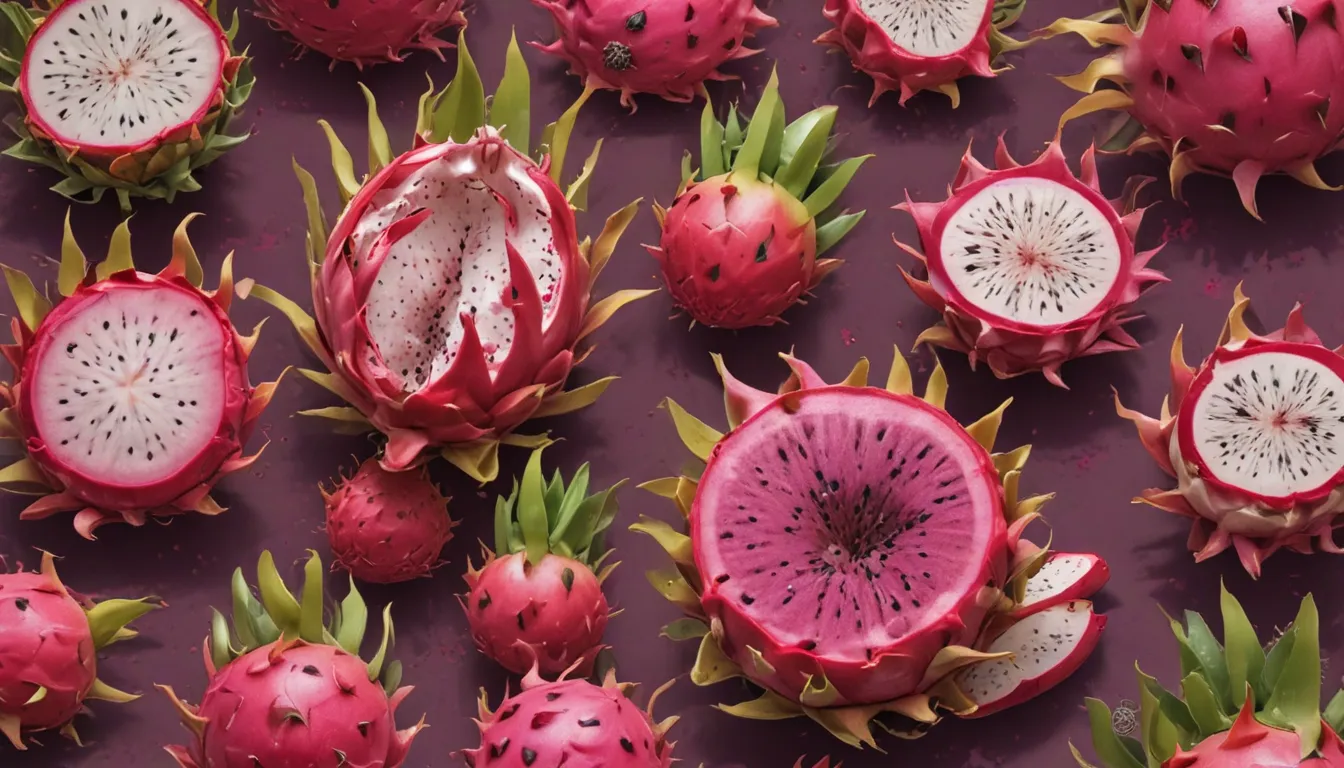The Best Pitaya Varieties to Grow at Home: A Guide to Dragon Fruit Cultivars

Are you interested in cultivating your very own pitaya at home? Dragon fruit, also known as pitayas, come in a variety of sizes, shapes, skin colors, flesh colors, and flavor profiles. Choosing the best cultivar that suits your taste buds and growing conditions is essential for a successful harvest.
In this extensive guide, we will delve into some of the best dragon fruit varieties available for you to grow at home. From sweet and tangy red-fleshed ones to small, yellow fruits, there is a pitaya variety to suit every preference. Let’s explore these 11 top pitaya cultivars and uncover their unique characteristics.
1. American Beauty
Key Characteristics:
– Cultivar of Selenicereus guatemalensis from Guatemala
– Red skin with green bracts and magenta-colored flesh
– Sweet and juicy pulp with a Brix score of 18.51
– Round fruits weighing half a pound to one pound each
– Harvested from June to November and requires some shade
Where to Buy:
– Packs of 2 ‘American Beauty’ Cuttings (8″-12″)
– ‘American Beauty’ Dragon Fruit Plant with Trellis in 3 Gallon Pot
2. Colombiana (Yellow Dragon)
Key Characteristics:
– Cultivar of S. megalanthus from South America
– Small yellow fruits with spiny skin and white semi-translucent flesh
– Sweet taste with a Brix score of 21
– Self-fertile and harvested from late fall to winter
– Sensitivity to cold, heat, and full sun, prone to rust
3. Dark Star
Key Characteristics:
– Hybrid cross between S. guatemalensis and S. undatus
– Dark pink skin with purple flesh and grape-like undertones
– Sweet flavor with a Brix score of 19
– Medium to large fruits weighing three-quarters to one and a half pounds
– Self-sterile blooms, requiring cross-pollination
Where to Buy:
– Packs of 2 ‘Dark Star’ Cuttings (8″-12″)
4. David Bowie
Key Characteristics:
– Cultivar of S. undatus with pinkish-red skin and white, sweet, and tangy flesh
– Oval-shaped fruits weighing approximately one pound each
– Self-pollinating and productive plants
5. Delight
Key Characteristics:
– Hybrid cultivar of S. undatus and S. guatemalensis with light pink flesh
– Flavorsome, oval fruits with a Brix score of 18 or higher
– Improvement in heat and cold tolerance compared to other varieties
– Ready to harvest between June and December
Where to Buy:
– Packs of 2 ‘Delight’ Cuttings (8″-12″)
6. Halley’s Comet
Key Characteristics:
– Hybrid of S. undatus and S. guatemalensis with bright red to pink skin
– Round, large fruits with magenta flesh and a Brix score of 16.7
– Strong, tolerant of full sun, and improved heat and cold tolerance
Where to Buy:
– ‘Halley’s Comet’ Packs of Rooted Starter Plants
7. Lisa
Key Characteristics:
– Cultivated variety of S. monacanthus with thick red skin and dark red flesh
– Rich, flavorful taste with a Brix score of 18
– Oval-shaped fruits weighing one pound each
– Self-sterile blooms requiring cross-pollination
8. Physical Graffiti
Key Characteristics:
– Hybrid of S. guatemalensis and S. undatus with bright, pinkish-red skin
– Light purple to magenta flesh with a Brix score just under 18
– Oblong fruits weighing up to a pound and a half each
– Requires cross-pollination with a red-fleshed variety as a pollinator
Where to Buy:
– Sets of 2 ‘Physical Graffiti’ Cuttings (8″-12″)
9. Purple Haze
Key Characteristics:
– Hybrid of S. guatemalensis and S. undatus with pink skin and purple flesh
– Sweet taste with hints of grape and kiwi and a Brix score of 19
– Large, oblong fruits weighing one to two pounds each
10. Sugar Dragon
Key Characteristics:
– Cross of S. guatemalensis with an unknown species
– Red skin with reddish-purple flesh and a sweet taste
– Oval-shaped fruits weighing eight to twelve ounces each
– Self-fertile and self-pollinating with excellent growth
Where to Buy:
– 2 ‘Sugar Dragon’ Cuttings (7″-10″)
11. Yellow Thai
Key Characteristics:
– Hybrid of S. megalanthus and S. undatus with soft pink skin and yellow bracts
– Sweet and tart flavor reminiscent of pink lemonade with a Brix score of 18.5
– Large, oblong fruits weighing over a pound each
– Self-fertile and self-pollinating with increased yields through hand-pollination
With such a fantastic array of dragon fruit varieties to choose from, you can soon be growing your very own pitaya garden at home. Have you selected your favorites from this list? Do you have any other dragon fruit cultivars you love that we didn’t include? Share your thoughts in the comments below!
Are you interested in learning more about edible and medicinal succulents you can grow in your garden? Explore our related articles to expand your knowledge:
– How to Grow Prickly Pear Cactus
– How to Grow and Care for Agave in the Garden
– Tips for Growing Aloe Vera Outdoors
Happy cultivating your own flock of dragons in your backyard oasis!





